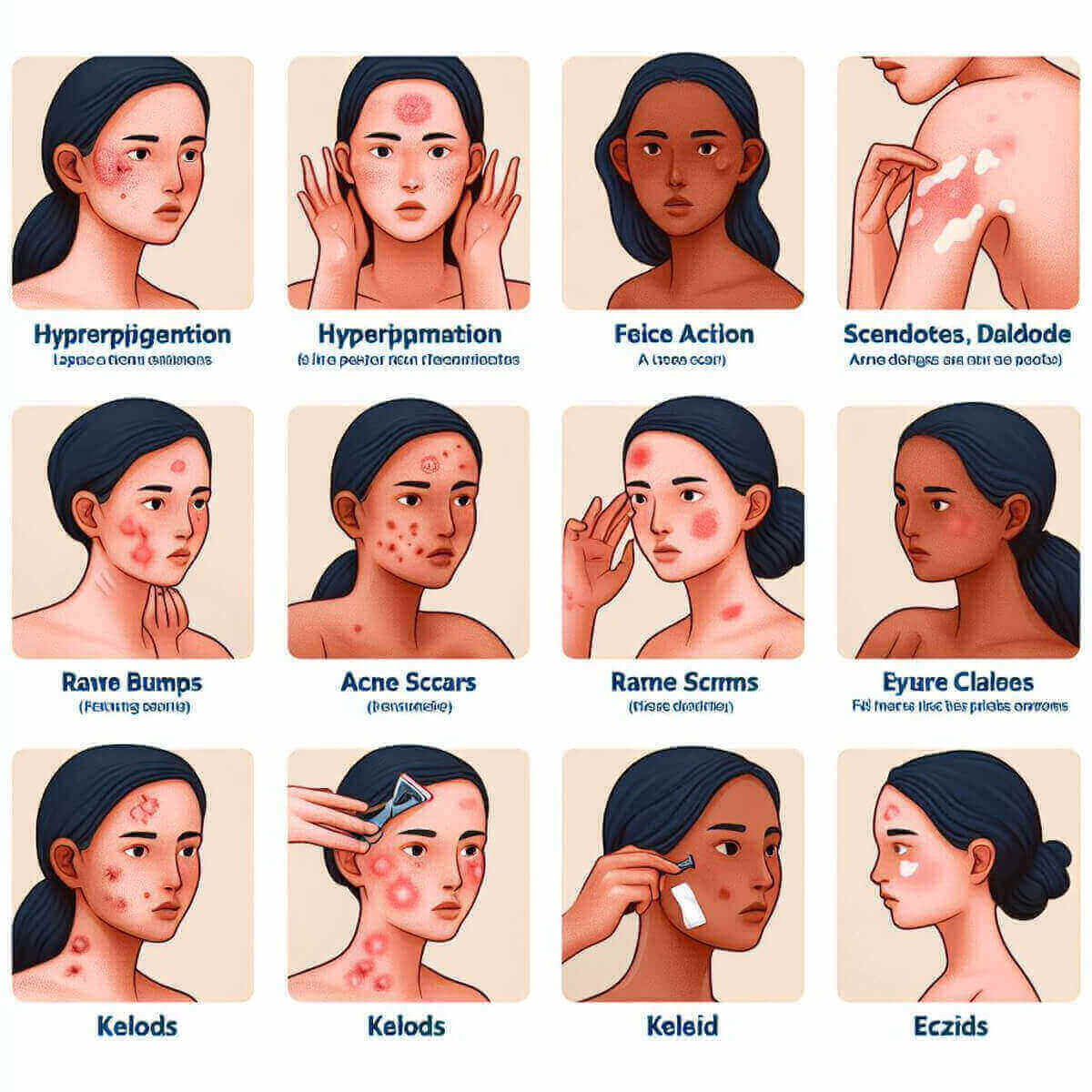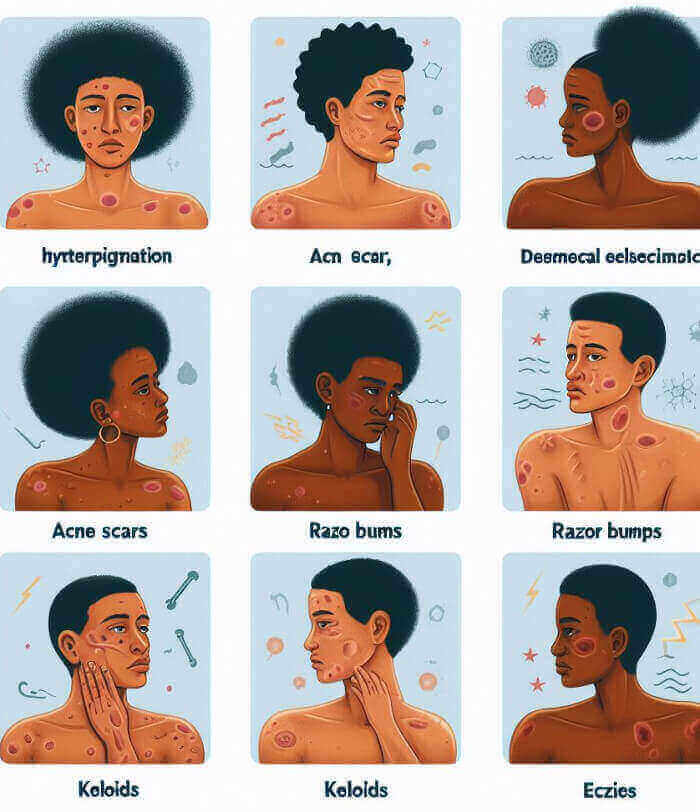
Common skin problems for people with darker skin tones
People with dark skin may experience a range of skin issues that are unique due to their higher levels of melanin. It is important to note that while skin conditions affect people of all skin tones, certain concerns may be more noticeable or present themselves differently in those with darker skin. Below are some common skin problems in people with dark skin:
- Hyperpigmentation: This is the most common of all the skin problems that afflict people of color. Darker skin is more prone to hyperpigmentation, which can result from conditions such as acne, eczema, or injury. Dark spots or patches may develop be more persistent and noticeable.
- Keloids: Darker skin has a higher tendency to form keloids, which are raised overgrowths of scar tissue. Keloids can develop after minor injuries or surgical procedures and may be more prominent in individuals with darker skin tones.
- Post-inflammatory Hyperpigmentation (PIH): PIH occurs after skin inflammation or injury, leaving behind dark spots or discoloration. Darker skin tones are more susceptible to PIH, and the pigmentation changes can last longer.
- Acne: Acne can affect individuals of any skin tone, but the aftermath (such as hyperpigmentation or keloid scarring) may be more noticeable in people with darker skin.
- Acanthosis Nigricans: This condition is characterized by dark, thickened, velvety patches of skin, often around the neck, armpits, or other body folds. It is associated with insulin resistance and obesity. According to the American Academy of Dermatology (AAD). Acanthosis nigricans can also be an early warning sign of diabetes, hormonal problems such as PCOS and even skin cancer.
- Hypopigmentation Disorders: In addition to hyperpigmentation, disorders leading to loss of skin color (such as vitiligo) may be more visually striking in individuals with darker skin.
- Rosacea: Easy to miss in people with darker skin. In lighter skinned people, it causes redness. In people of color, the affected skin can often appear darker and brown in color.
- Ashy Dermatosis: This skin problem is more common in individuals with darker skin. It leads to gray or ashy patches on the skin, usually on the legs.
- Pseudofolliculitis Barbae (Razor Bumps): Due to the curly nature of hair in people with dark skin, shaving can sometimes lead to ingrown hairs, resulting in razor bumps and inflammation.
- Eczema (Atopic Dermatitis): Eczema can affect individuals of all skin tones, but it might be more noticeable in dark skin due to hyperpigmentation or hypopigmentation associated with the condition. The skin may appear ashy, and scratching can lead to post-inflammatory hyperpigmentation.
- Psoriasis: Psoriasis can manifest differently in people with darker skin. The plaques may be darker or more pigmented, making them easily mistaken for other skin conditions.
- Dermatosis Papulosa Nigra: This condition is characterized by small, dark bumps, often seen on the face, neck, or chest. It is more common in individuals with darker skin.
- Lichen Planus: Dark skin may exhibit hyperpigmented or hypopigmented patches due to lichen planus, an inflammatory skin condition.
- Tinea (Fungal Infections): Fungal infections, such as tinea versicolor, can cause changes in skin pigmentation. In darker skin, these infections may result in hypopigmented or hyperpigmented patches.
- Seborrheic Dermatitis: This chronic inflammatory condition can affect the scalp, face, and other areas, leading to redness, scaling, and sometimes hyperpigmentation, particularly in individuals with darker skin.
- Folliculitis: Inflammation of hair follicles can result in dark spots or keloid scars in people with dark skin, especially if the condition becomes chronic.
- Moles and Melanoma: While people with darker skin are less prone to developing melanoma, when it occurs, it is often diagnosed at a later, more advanced stage. It’s essential for individuals with dark skin to regularly check for changes in moles and seek prompt medical attention if any are noticed.
- Allergic Contact Dermatitis: Pigmented skin may respond to allergens or irritants with hyperpigmentation or hypopigmentation, creating distinctive patterns on the skin.
- Granuloma Annulare: This chronic skin condition can cause raised, reddish or skin-colored bumps in a ring pattern. In individuals with dark skin, the lesions may appear hyperpigmented.
- Xerosis (Dry Skin): People of color may be more prone to dryness. This leads to conditions like xerosis, which can cause itchiness, scaling, and discomfort.
- Hidradenitis Suppurativa: This chronic skin condition involves the inflammation of hair follicles, resulting in painful nodules, lumps and abscesses. In people with dark skin, scarring and hyperpigmentation may be more prominent.
It’s important for individuals with dark skin problems to seek dermatological care from professionals who understand the unique challenges and characteristics of darker skin tones. Early diagnosis and appropriate management can help address these skin concerns effectively. Additionally, proper skincare practices, including sun protection, can contribute to maintaining healthy skin in individuals of all skin tones.
